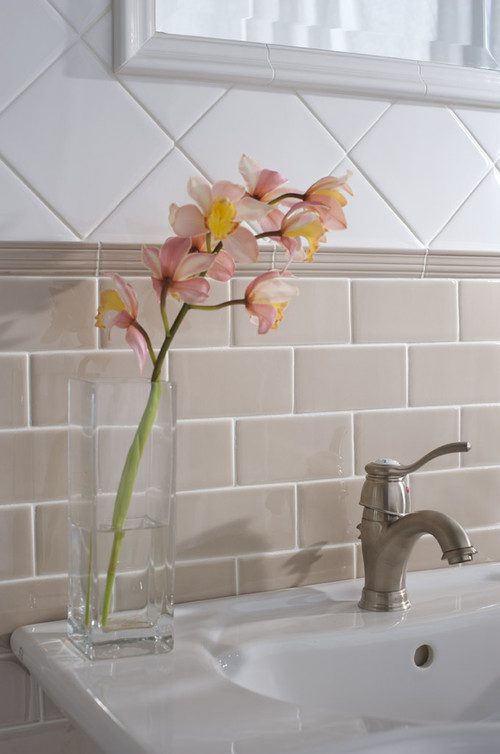Porcelain and ceramic tiles are two popular choices for flooring and wall coverings, each with its own unique characteristics and applications. While they share some similarities, they also have significant differences that can influence your choice for specific projects.
- Composition:
- Porcelain Tile: Porcelain tiles are made from a blend of fine-grain clays, feldspar, and other natural materials. They are fired at higher temperatures than ceramic tiles, resulting in a denser, less porous material.
- Ceramic Tile: Ceramic tiles are composed of clay mixed with various minerals and water. They are typically fired at lower temperatures than porcelain, making them less dense and more porous.
- Durability:
- Porcelain Tile: Porcelain tiles are known for their exceptional durability. Their density makes them highly resistant to water, stains, and wear and tear. They are suitable for both indoor and outdoor applications and can withstand heavy foot traffic.
- Ceramic Tile: Ceramic tiles are less dense and slightly more prone to chipping and cracking than porcelain tiles. They are better suited for indoor use, such as in bathrooms and kitchens, and are less resistant to extreme weather conditions.
- Water Absorption:
- Porcelain Tile: Porcelain tiles have a water absorption rate of 0.5% or less. This low absorption rate makes them an excellent choice for areas with exposure to moisture, such as bathrooms and kitchens.
- Ceramic Tile: Ceramic tiles typically have a higher water absorption rate, which can vary but generally falls between 3% and 7%. This makes them less suitable for wet areas but still appropriate for many indoor applications.
- Cost:
- Porcelain Tile: Porcelain tiles are generally more expensive than ceramic tiles due to their manufacturing process and durability.
- Ceramic Tile: Ceramic tiles are more budget-friendly, making them a cost-effective choice for many interior projects.
In summary, the choice between porcelain and ceramic tiles depends on your specific needs and preferences. If you require a highly durable, water-resistant, and versatile tile for various applications, porcelain is an excellent choice. Ceramic tiles, on the other hand, offer affordability and a wide array of design possibilities, making them a suitable option for interior projects where moisture exposure is limited.
The team at Conestoga Tile would be happy to tell you all about porcelain and ceramic tile. We invite you to contact us with your questions and for assistance selecting the perfect tile for your home.
